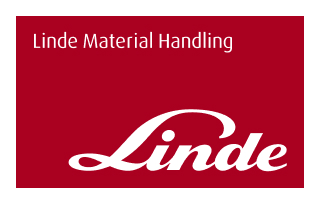- Blog
- General


There are many variables that an operator must be aware of, when working with heavy machinery. As such, it’s important that the machinery provides adequate warning, whenever possible. Whether there be a mechanical fault, weight imbalance, safety hazard or if a load is too heavy, an operator’s ability to correctly and safely complete a task depends heavily on the effective and reliable warning system of the machine.
With almost 1 million Australians regularly exposed to harmful noise levels in the workplace and with the visual impairment which can come with changing environments and lighting factors, the implementation of smart and effective warning systems is imperative to the safety of the workplace. Maintaining a safe work environment is everyone’s business but communicating a message of warning to operators quickly and clearly can be difficult. With workers focused on the task at hand, they may not be paying attention to movements around them.
Linde machines are fitted with both audible and visual warning systems, ensuring the warning signal is received, despite external factors impacting on the operator’s ability to see and hear. At Linde, we recognise the necessity for both audible and visual warning systems and these safety alarms increase the safety of machinery operators as well as the safety of the workplace environment.
Visual and audible warnings are provided in safety-critical conditions. Additionally, speed reduction is applied in relation to the residual value and as the steering angle increases.
With many operators reporting that the wide variety of lights and warnings flashing on their dashboard is becoming distracting, it also has the potential to create complacency and confusion. By including an audible warning, Linde machinery is better equipped to cut through the messaging, to quickly alert the operator of imminent danger.
Loud workplaces and environments mean audible warnings can be difficult to hear and with a large portion of the Australian workplace suffering from differing levels of hearing loss, the inclusion of visual warnings is imperative. Paired with an audible warning signal, visual warnings ensure the operator receives the warning and is able to act quickly, to avoid danger, damage or injury.
There’s no simple answer here. However, because we know in our industry that there’s no such thing as being “too safe” we have included additional safety features. To further protect the operator’s safety, and the safety of those in the work environment, the visual and audible warnings are accompanied by an automatic reduction in speed, which is applied in relation to the residual value, as the steering angle increases. Acceleration is also regulated in relation to the steering angle and load weight.
The Linde audible and visual warning system contributes to an increase in efficiency and productivity, minimising incidents causing damage and downtime for both the goods and the machinery. We are proud be a provider of machinery which has the potential to help save lives, avoid injury and increase profit margins.
By utilising the latest technological advances in safety features, we are committed to assisting owners and operators comply with the statutory requirements for the training and instruction of personnel, maintaining correct maintenance intervals and managing truck downtime for damage and technical reasons as well as changes to legal framework conditions and requirements.